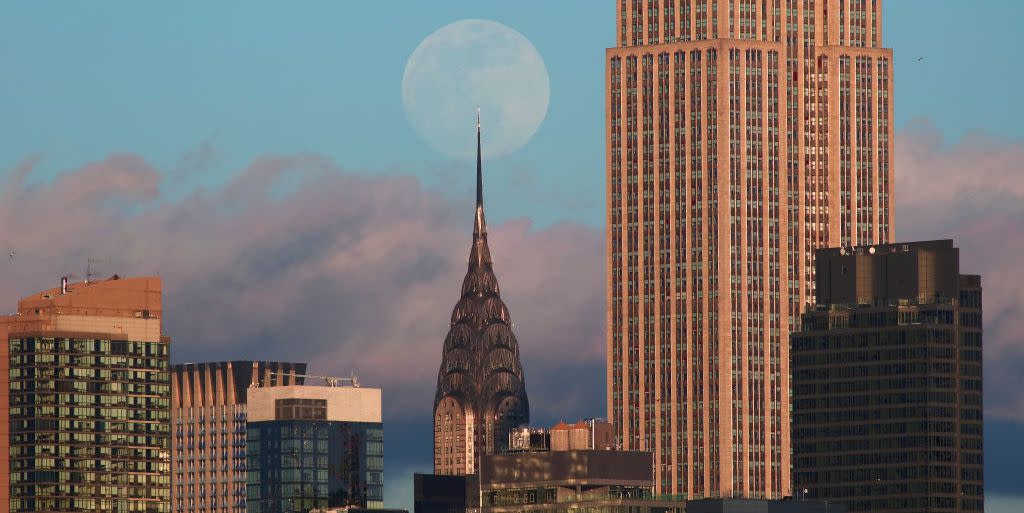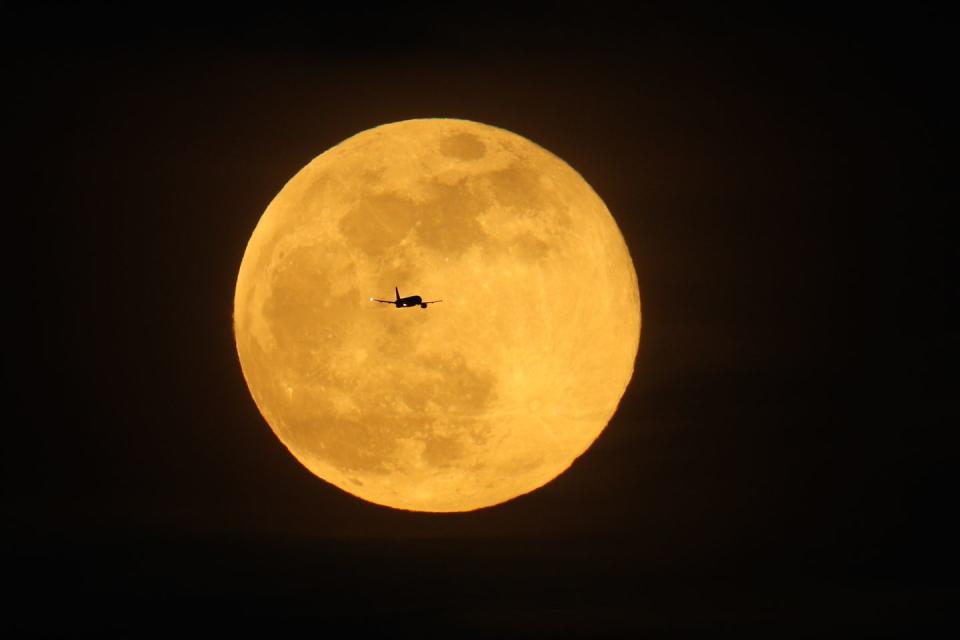Look Up Tonight and Catch the Biggest Supermoon of 2019

You'll be able to see the largest of this year's supermoons if you look skyward tonight, February 19. So look up and hope for clear skies!
What is a supermoon again?
A "supermoon" happens when a moon reaches its full phase at or close to perigee-the point in its orbit when it's closest to Earth. Because the moon's orbit changes orientation relative to the Earth's orbit around the sun, supermoons don't happen every year; 2019 has only three. The first was on January 21, which also coincided with a lunar eclipse, and was dubbed a "blood moon" because the only light it caught was reddish-brown and reflected from the Earth. The third will occur next month on March 21.
Exactly how close does a full moon have to be to qualify as "super"? Within 90 percent of its closest point-per the website EarthSky, that's 224,775 miles or less. Today's moon appears bigger than 2019's two other supermoons simply because, at only 221,681 miles away, it's the closest to Earth that a full moon will get this year.
When should I look for it?

While the full moon technically peaked at 10:53 a.m. U.S. Eastern time today, the optimal time to see it will be between 5:30 p.m. and 6:30 p.m. local. It'll also look larger and more impressive as it approaches the horizon, due to an optical trick known as the "moon illusion." That is, scientists think human brains interpret objects on the horizon to be larger than objects of similar size that are high in the sky, perhaps because things like buildings and mountains can be processed as reference.
Once the supermoon gets higher in the sky, it'll be difficult to perceive the size difference with the naked eye. But its closeness also means that, although the luminescence reflected from the sun is the same, from an Earthbound perspective it can be noticeably (up to 30 percent) brighter than a regular full moon.
Source: Space.com
('You Might Also Like',)

 Yahoo News
Yahoo News 
